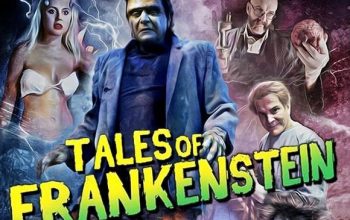Revenge of Frankenstein – 1958
This hour, when I momentarily expect my release, is the only happy one which I have enjoyed for several years. The forms of the beloved dead flit before me, and I hasten to their arms. – Mary Shelley, Frankenstein
They will never be rid of me! – Baron Victor von Frankenstein, Revenge of Frankenstein

The Revenge of Frankenstein is the second of the Hammer Frankenstein movies, starring Peter Cushing and directed by Terrence Fisher. It is interesting in that it contains no obvious revenge. It is followed by the Evil of Frankenstein, in which Frankenstein does seek revenge, but is not noticeably evil. Go figure.
Revenge is better than its predecessor by a mile. The plot makes a great deal more sense, the Monster is better looking and more sympathetic and with the basic Frankenstein story taken care of in Curse of Frankenstein, Revenge is able to do something less predictable.
We open on the guillotine that was the closing shot of Curse. Baron Frankenstein (Peter Cushing) is lead out by a priest and a visibly disabled jailer. The blade comes down, but we do not see Frankenstein die. Later, two grave robbers try to help themselves to Frankenstein’s corpse, only to find that his coffin contains the body of the priest.
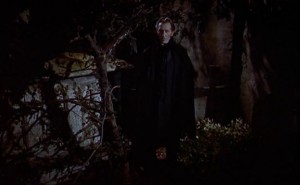
Later, the Medical Council of Carlsbruek is discussing the mysterious ‘Dr Stein’, who has set up practice in their town and stolen away all their best patients. Unhappy, they send a delegation to encourage him to join. Dr Stein is actually Frankenstein (duh) and it is implied that his success at stealing patients is at least partly to do with the fact that the ladies love him.
(As an aside, the Cushing’s Frankenstein was shown to be a bit of a ladies man in the first movie. In this, women are shown to be attracted to him, but he shows little sign of being interested in return.)
Dr Stein’s wealthy patients finance what Stein claims is his true passion: the Poor Hospital — but it is implied that this Hospital is really just a source of spare parts. One of the medical council, Dr Hans Kleve* (Francis Matthews), recognises Frankenstein and becomes his assistant.
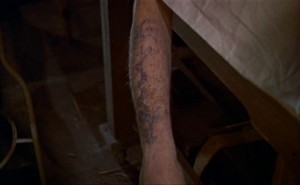
Stein shows Kleve his lab. He has the partially paralyzed jailer, Karl (Oscar Quitak), as his assistant and a tank which contains a man he has built. Everything is ready to go for the new creation except for the brain, which must come fresh. Kleve believes that this must mean murder, but in one of the cleverer twists of the movie, Stein has a volunteer brain donor – Karl, who will be cured of his disability in his new body.
The situation is complicated by the arrival of Margaret (Eunice Gayson), the daughter of an influential minister who wants to work at the Poor Hospital. Stein lets her, feeling that it is the easiest course of action. Karl falls for Margaret, but does not approach her.
Stein and Kleve complete the transplant. It is a success. Karl comes to life in a new body (Michael Gwinn) and other than a scar on his forehead looks pretty good. However, he is in pain. Fearful that he may injure himself, Stein orders him strapped down to a bed in the Poor Hospital attic.
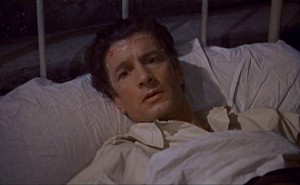
Margaret hears of the plight of this mystery patient and tries to offer him help. (Seriously, what is up with all these nosey women? Always peeking into the Monster Room.) Using a stolen key, she goes to see him to see him. He convinces her to loosen his bonds. Karl is free, but begins to deteriorate physically and mentally, becoming a murderer.
Stein and Kleve go to Margaret’s aunt’s musical gathering, where Stein interrogates Margaret. He is interrupted when Karl, crashes through the window. Karl has deteriorated terribly, and now looks seriously monsterous. He calls out to Stein: “Frankenstein… Help… me…” before dying.
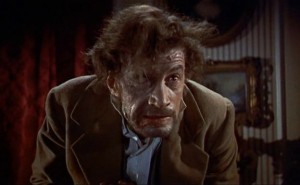
The hospital inmates, learning that Stein is Frankenstein, beat the doctor to death. Kleve removes the Baron’s brains, and shows his body to the police and Medical Council.
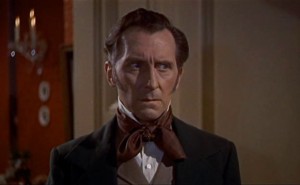
In the final scene, we see a number of well-to-do women in a waiting room in London’s Harley Street, belonging to one Dr Franck. As Dr Franck washes his hands, we see one arm is covered by a familiar tattoo. He smooths down his moustache, nods to his assistant, Kleve, and carries on.
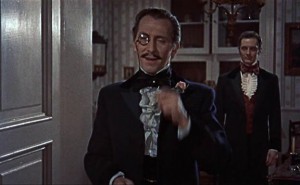
So, here’s my theory about the Hammer Frankenstein movies: other than the first one, they’re not really Frankenstein movies. They’re sort of hybrid films, with the Frankenstein element mixed with another classic monster. Evil of Frankenstein explicitly mixes Frankenstein with Dr Caligari, Frankenstein Created Woman is a ghost story, Frankenstein Must Be Destroyed is a doppelganger story, The Horror of Frankenstein is basically Carry on Frankenstein** and Frankenstein and the Monster from Hell is… well, I’ll get to that one.
Revenge of Frankenstein, in this interpretation, is a vampire movie. Frankenstein is Dracula. An aristocrat, believed dead, arises in a graveyard. He is charming to women, but dangerous. He prays on those beneath him on the social scale, prolonging his existence by consuming their bodies. Eventually, his victims turn on him and seemingly destroy him, but he returns from the grave to continue his bloody occupation.
Revenge was shot back-to-back with the first of Hammer’s Christopher Lee Dracula movies, and perhaps this is why some of the same ideas leach through. But this is Cushing-as-Dracula, where is Cushing as van Helsing? Nowhere to be found. There is no good guy. While Curse has Paul Krempe, a colleague of Frankenstein’s who tries to restrain his friend’s worst impulses, Revenge has Hans who backs Victor all the way.

Stein’s enemies are many, but they lack van Helsing’s perspicacity and benevolence. No one except Hans is clever enough to detect the monster in their midst, and those who act against Stein are motivated more by self-interest and fear than by any heroic impulse.
Of course there’s a reason for this, and that reason is that van Helsing is simply too similar a character to Frankenstein. Van Helsing and Frankenstein are both brilliant scientists who spend their lives studying dark forces and forbidden knowledge, and their knowledge brings them into conflict with monsters. The difference is that van Helsing’s monsters are external to him while Frankenstein’s are of his own making. It is possible to imagine a film pitting van Helsing against Frankenstein, but Frankenstein Must be Destroyed is the closest Hammer gets. For now, Frankenstein is clear to work without interference from an intellectual equal.
So what brings him down? Our cold-hearted aristocrat is defeated in the end by a well-meaning aristocrat. It is Margaret’s kindness to Karl in loosening his restraints that tips the first domino. From that point the destruction of Stein’s creation and his own unmasking are inevitable. Frankenstein and Hans are amoral. The Medical Council is self-serving. The inmates of Frankenstein’s hospital are mostly petty criminals. Even Karl, though sympathetic, is not noticeably good. Margaret is the only character shown to be acting from kind and generous impulses, and it telling that these impulses bring Stein’s monstrous scheme crashing down.

And yet, there’s nothing preachy about this. The structure of the movie is a straight, old fashioned tragedy – man driven to destruction by his own hubris – with a little contemporary sting in the tail when he comes back to life. Margaret’s subplot is beautifully underplayed, hiding the sentimentality of her role with a veneer of Hammer cynicism.
One final thought: As Stein is being grilled by Hans, he admits to being called Frankenstein, but denies the significance of the name. “My name is Frankenstein, I’ll admit,” he says, “but it’s a large family, you know. Remarkable since the Middle Ages for productivity. There are offshoots everywhere. Even in America, I’m told. There’s a town called Frankenstein in Germany. Then there are the Frankensteins emanating from the town of that name in Silesia…”
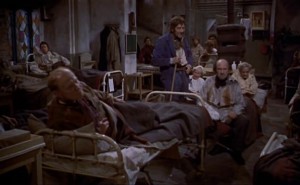
It’s an intriguing thought. The Frankenstein family as a dynasty of monster makers goes back to Son of Frankenstein in 1931, and since then Frankenstein movies have been filled with Victor’s sons, daughters, and grandchildren by the score. Yet having introduced the possibility of more Frankensteins, the Hammer movies keep their focus firmly on Victor. Other than Victor’s cousin Elizabeth in Curse and his father in Horror, I don’t believe we ever see any of this huge family that Victor claims to hail from.
* As in Clever Hans? If so, it’s a weird and obscure joke.
** The trouble (well, one of the troubles) with Horror of Frankenstein is that its attempt to be a Hammer version of a Carry On film is distinctly inferior to Carry on Screaming — Carry On’s version of a Hammer film.



